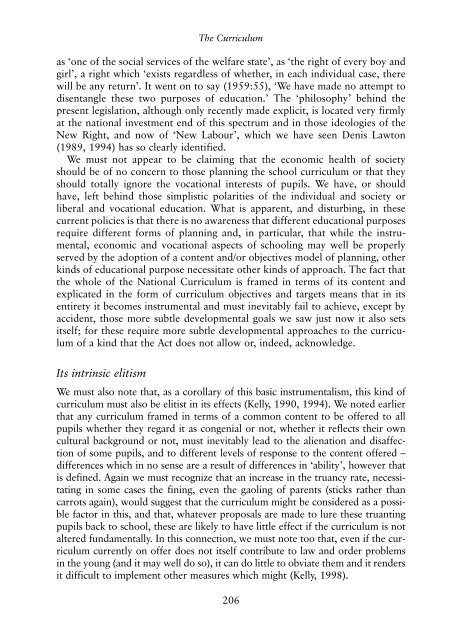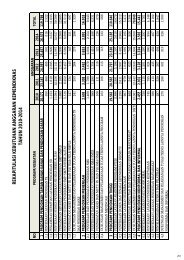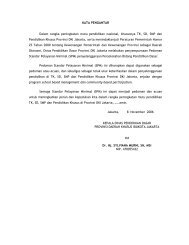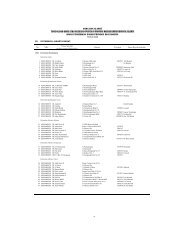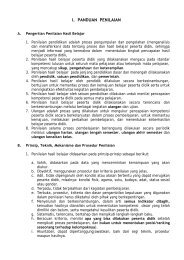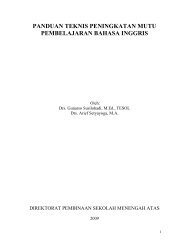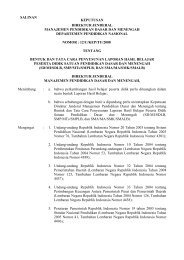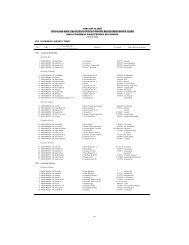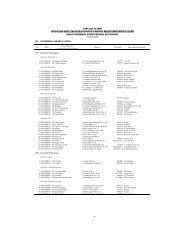The Curriculum - WordPress.com
The Curriculum - WordPress.com
The Curriculum - WordPress.com
Create successful ePaper yourself
Turn your PDF publications into a flip-book with our unique Google optimized e-Paper software.
<strong>The</strong> <strong>Curriculum</strong>as ‘one of the social services of the welfare state’, as ‘the right of every boy andgirl’, a right which ‘exists regardless of whether, in each individual case, therewill be any return’. It went on to say (1959:55), ‘We have made no attempt todisentangle these two purposes of education.’ <strong>The</strong> ‘philosophy’ behind thepresent legislation, although only recently made explicit, is located very firmlyat the national investment end of this spectrum and in those ideologies of theNew Right, and now of ‘New Labour’, which we have seen Denis Lawton(1989, 1994) has so clearly identified.We must not appear to be claiming that the economic health of societyshould be of no concern to those planning the school curriculum or that theyshould totally ignore the vocational interests of pupils. We have, or shouldhave, left behind those simplistic polarities of the individual and society orliberal and vocational education. What is apparent, and disturbing, in thesecurrent policies is that there is no awareness that different educational purposesrequire different forms of planning and, in particular, that while the instrumental,economic and vocational aspects of schooling may well be properlyserved by the adoption of a content and/or objectives model of planning, otherkinds of educational purpose necessitate other kinds of approach. <strong>The</strong> fact thatthe whole of the National <strong>Curriculum</strong> is framed in terms of its content andexplicated in the form of curriculum objectives and targets means that in itsentirety it be<strong>com</strong>es instrumental and must inevitably fail to achieve, except byaccident, those more subtle developmental goals we saw just now it also setsitself; for these require more subtle developmental approaches to the curriculumof a kind that the Act does not allow or, indeed, acknowledge.Its intrinsic elitismWe must also note that, as a corollary of this basic instrumentalism, this kind ofcurriculum must also be elitist in its effects (Kelly, 1990, 1994). We noted earlierthat any curriculum framed in terms of a <strong>com</strong>mon content to be offered to allpupils whether they regard it as congenial or not, whether it reflects their owncultural background or not, must inevitably lead to the alienation and disaffectionof some pupils, and to different levels of response to the content offered –differences which in no sense are a result of differences in ‘ability’, however thatis defined. Again we must recognize that an increase in the truancy rate, necessitatingin some cases the fining, even the gaoling of parents (sticks rather thancarrots again), would suggest that the curriculum might be considered as a possiblefactor in this, and that, whatever proposals are made to lure these truantingpupils back to school, these are likely to have little effect if the curriculum is notaltered fundamentally. In this connection, we must note too that, even if the curriculumcurrently on offer does not itself contribute to law and order problemsin the young (and it may well do so), it can do little to obviate them and it rendersit difficult to implement other measures which might (Kelly, 1998).206


